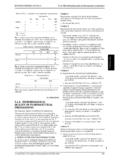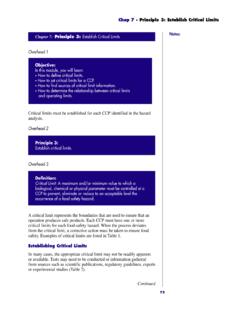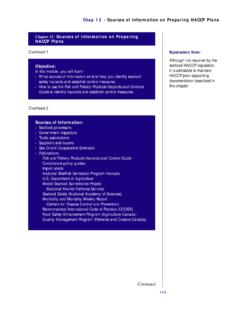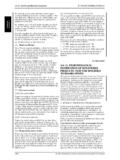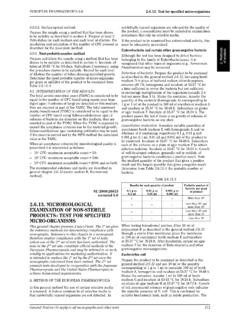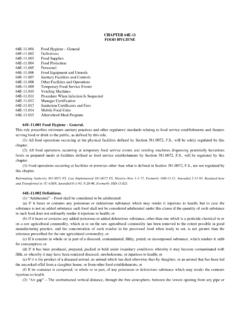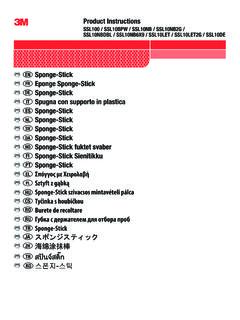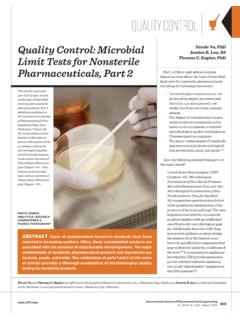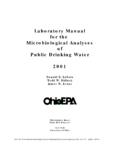Transcription of BRC/CFA Guidance on the MCR - chilledfood.org
1 Guidance on the Practical Implementation of the EC Regulation on microbiological criteria for Foodstuffs EDITION 6 DECEMBER 2006 Guidance on the Practical Implementation of the EC Regulation on microbiological criteria for Foodstuffs edition , Dec2006 Published by Chilled Food Association Ltd, Box 6434, Kettering, NN15 5XT, UK 2006 Chilled Food Association Ltd Typeset in Arial 10 ISBN-13 978-1-901798-13-5 ISBN-10 1-901798-13-5 Enquiries concerning reproduction should be sent to the Chilled Food Association Ltd at Box 6434, Kettering, NN15 5XT, UK CFA publishes information and expresses opinions in good faith, and seeks to ensure that the information and opinions it provides are correct, but accepts no liability for any error or omission in any such information or opinion, including any information or opinion contained in this document.
2 The information contained herein is to assist with the understanding of the EC Regulation on microbiological criteria for Foodstuffs. It is not a definitive interpretation of the law which only the courts can provide. Information and opinion herein are not substitutes for specific legal or other professional advice. 1 Guidance on the Practical Implementation of the EC Regulation on microbiological criteria for Foodstuffs edition , Dec2006 FOREWORD This Guidance is intended to help food business operators (manufacturers and retailers) to understand the requirements of the Commission Regulation on microbiological criteria for Foodstuffs ( the Regulation ), providing additional detail to that given in the Food Standards Agency s own Guidance documents.
3 The purpose of the Regulation is to protect public health and provide harmonised reference points for Food Business Operators (FBOs). It relates to the General Food Law (178/2002/EC) that obliges FBOs to withdraw or recall unsafe food from the market. It states that safety is ensured by a preventative approach such as employing good hygiene practices and use of Hazard Analysis and Critical Control Point (HACCP) principles. This Guidance assumes FBOs have working knowledge of this approach. The Regulation generally relates to finished manufactured foods and not to ingredients or raw materials used to manufacture that food.
4 However, FBOs producing/supplying raw materials may be affected by the Regulation through the application of criteria and corrective actions required by their customers food safety management plans. With the exception of raw minced meat, meat preparations, certain meat products intended to be cooked and mechanically separated meat, the Regulation does not specify the frequency of sampling/testing, and it is for the FBO to decide the appropriate level of sampling/testing to help validate and verify their food safety management systems, HACCP. This Guidance document is separated into two parts: Part A is an overview of the requirements of the Regulations.
5 Part B provides interpretation of Annex I (the microbiological criteria ) for both food safety and process hygiene. The tables in this section are taken directly from the regulation and include relevant footnotes for clarity. The interpretations appear below the table in blue text. The Guidance has been prepared by the Chilled Food Association with support from: British Retail Consortium British Frozen Food Federation British Meat Processors Association Campden and Chorleywood Food Research Association Food Standards Agency Health Protection Agency Provision Trade Federation This Guidance will be updated as required in light of practical experience.
6 6 December 2006 Version The Regulation provides for further criteria to be added in the future and businesses must ensure that they are aware of any changes. The issuing organisations seek to ensure the information and Guidance they provide is correct, but accept no liability in respect thereof. Such information and Guidance are not substitutes for specific legal or other professional advice. 2 Guidance on the Practical Implementation of the EC Regulation on microbiological criteria for Foodstuffs edition , Dec2006 Contents Page Part A Overview of the Requirements of the Regulations4 1. The Purpose Of microbiological Criteria4 2.
7 The Purpose of microbiological Testing4 3. The Legal Context4 4. Requirements For Food Business Operators5 5. Recommendations For Food Business Operators6 6. Definitions9 7. Sampling Plans and Frequencies9 Part B Interpretation of Annex I of the Regulations (The criteria ) 11 8. Food Safety criteria Index 11 Ready-to-eat foodsMinced meat and meat preparationsMeat and products thereof Milk and dairy products Infant Formula and dried dietary foods for infants for special medical purposesEgg ProductsFishery Products and Shellfish Produce16 22 25 27 28 29 30 32 Process Hygiene criteria Index 33 9. Meat and products thereof Milk and dairy productsInfant formula and dried dietary foods for infants for special medical purposes Egg ProductsFishery Products and Shellfish Produce 36 45 48 49 50 51 Figures 1.
8 Decision Tree Showing Application of Listeria monocytogenes (Lm) criteria for ready-to-eat foods other than infant foods and foods for special medical purposes 17 2. Sampling rules for poultry carcases43 Tables 1. Sampling frequencies for red meat carcases38 2. Sampling frequencies for poultry slaughterhouses41 3 Guidance on the Practical Implementation of the EC Regulation on microbiological criteria for Foodstuffs edition , Dec2006 PART A - OVERVIEW OF THE REQUIREMENTS OF THE REGULATIONS 1. The Purpose of microbiological criteria microbiological criteria are intended to give some degree of assurance that food is safe and of suitable quality, and that it will remain so to the end of its shelf life provided it is handled appropriately.
9 The EC Regulation on microbiological criteria for Foodstuffs requires FBOs to use the criteria given in the Regulation when carrying out validation and verification checks as part of food safety management systems based on HACCP principles. It should be noted that it is not an offence per se to breach the criteria set out in the Regulations. 2. The Purpose of microbiological Testing The safety of food is neither guaranteed nor controlled by microbiological testing. microbiological testing can be used to validate and monitor processes and verify Critical Control Points (CCPs) identified through HACCP.
10 microbiological testing of final product alone cannot be relied upon to demonstrate product safety and may be insufficient to demonstrate due diligence. The EC Regulation on microbiological criteria for Foodstuffs simply requires food business operators to ensure their products comply with microbiological criteria , testing against microbiological criteria as appropriate when they are validating or verifying the correct functioning of their procedures based on HACCP principles and good hygiene practice. It is important to note that the Regulations are not intended to create additional testing requirements since validating/verification testing is a standard part of HACCP.
